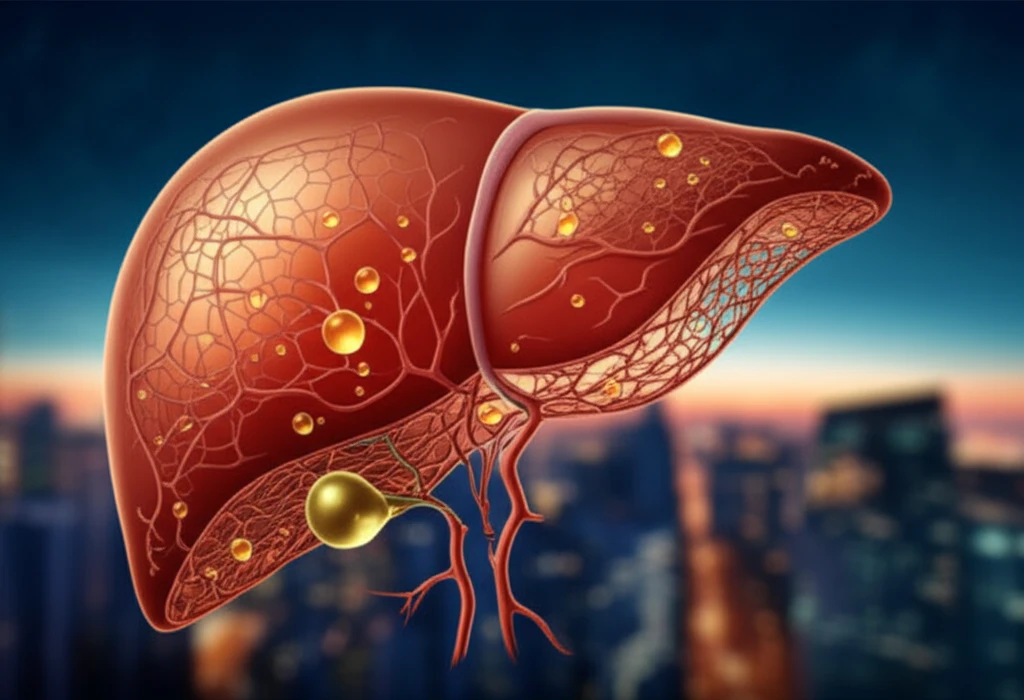
Fatty Liver & Cancer: Unveiling the Hidden Link
"New Research Explores How Nonalcoholic Fatty Liver Disease (NAFLD) Impacts Liver Cancer Development and Metastasis"
Nonalcoholic fatty liver disease (NAFLD) is rapidly emerging as a major health concern worldwide, mirroring the rise in obesity and insulin resistance. Once considered a relatively benign condition, NAFLD is now recognized as a significant contributor to chronic liver disease. The spectrum of NAFLD ranges from simple steatosis (fat accumulation in the liver) to nonalcoholic steatohepatitis (NASH), characterized by inflammation and liver cell damage, potentially progressing to cirrhosis and liver cancer.
Recent research has focused on understanding the intricate relationship between NAFLD and liver cancer, exploring how NAFLD not only increases the risk of developing liver cancer but also influences its progression and spread. With the incidence of hepatitis B and C declining due to effective antiviral strategies, NAFLD is predicted to become the leading risk factor for hepatocellular carcinoma (HCC), the most common form of liver cancer.
This article dives into a new retrospective study investigating the association between NAFLD and various types of liver cancer. The study analyzes clinical, laboratory, and histological data from 120 patients, revealing crucial insights into the prevalence of NAFLD in different liver tumors and highlighting specific risk factors that warrant attention.
Decoding the NAFLD-Liver Cancer Connection: What the Research Reveals

A retrospective study was conducted at the Hospital of Santa Casa Medical School of São Paulo, between January 2007 and December 2011. The study analyzed the clinical, laboratory, and histological data of 120 patients diagnosed with either primary or secondary hepatic neoplasms.
- Risk Factors Assessed: Diabetes mellitus, impaired glucose tolerance, impaired fasting glucose, body mass index (BMI), dyslipidemia, and arterial hypertension.
- Histological Analysis: Tumor-free liver parenchyma was examined to determine the presence and grade of NAFLD.
- NAFLD was significantly more prevalent in patients with liver metastases from colorectal cancer (LMCC) compared to those with hepatocellular carcinoma (HCC) and intrahepatic cholangiocarcinoma (IHCC).
- There was a higher prevalence of liver fibrosis in patients with HCC.
- No significant statistical association was observed between NAFLD, nonalcoholic steatohepatitis, liver fibrosis, and their risk factors in any of the tumors studied.
The Implications and Future Directions
This research highlights the complex relationship between NAFLD and liver cancer. While NAFLD, in general, wasn't statistically more prevalent in liver cancer patients compared to the general population, its strong association with liver metastases from colorectal cancer is a significant finding. This suggests that NAFLD may create a liver environment more susceptible to the colonization and growth of colorectal cancer cells.
